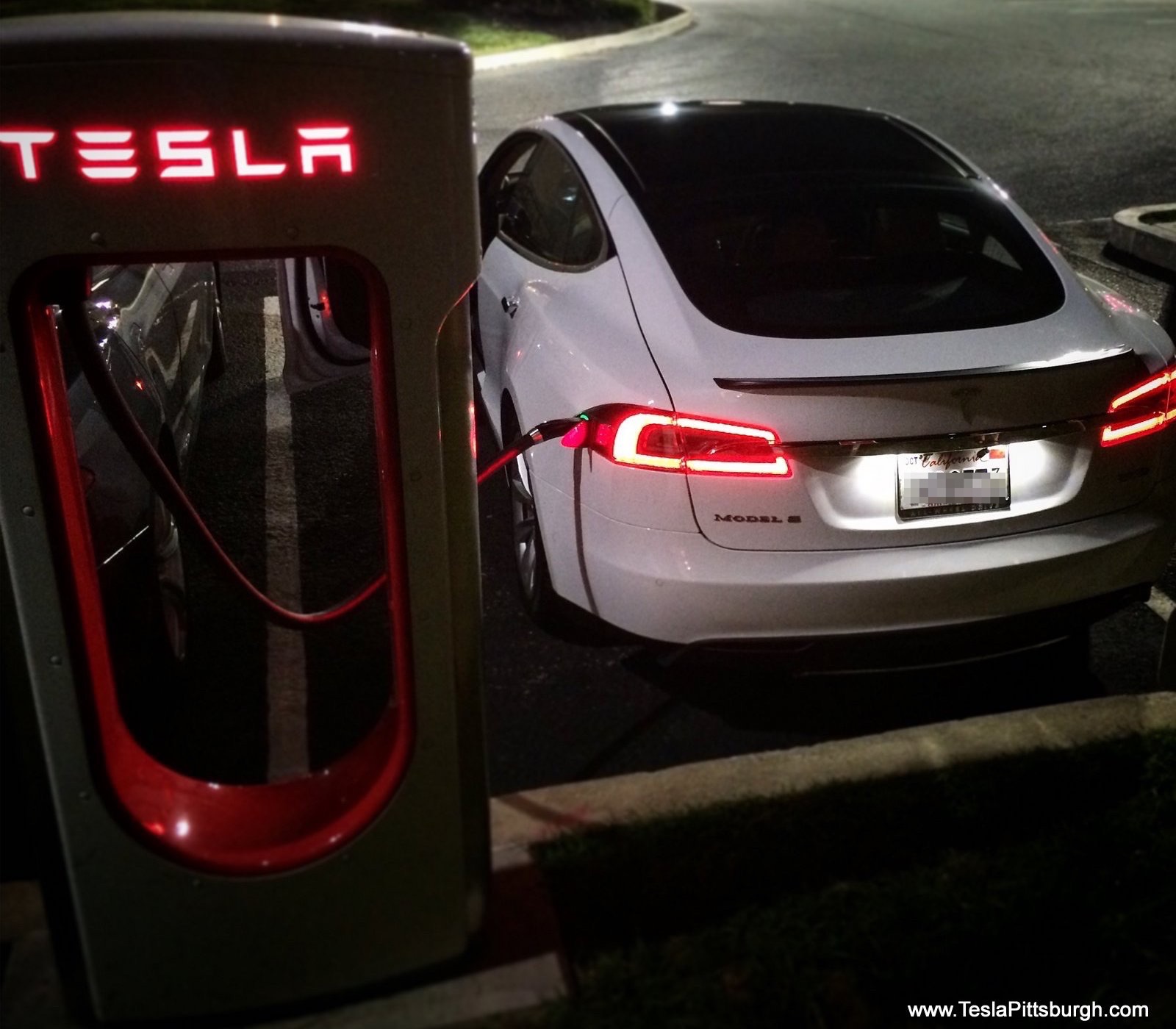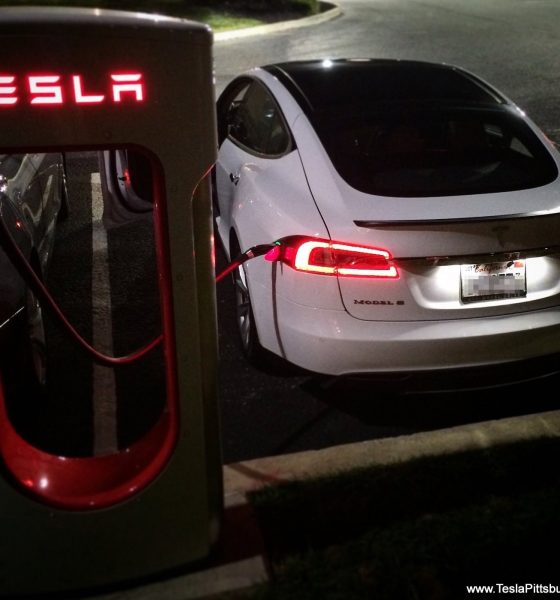

News
Tesla to roll out “Sentry Mode” security system on Model S, X and 3 equipped with Autopilot 2+ hardware
With the recent increase in Tesla vehicle break-ins and vandalism popping up across social media and online forums, CEO Elon Musk’s recent hint at an upcoming “Sentry Mode” feature for Model S, Model X, and Model 3 vehicles that are equipped with Enhance Autopilot hardware is both welcome and timely. The reveal comes via Twitter and in response to a customer’s complaint about a large dent found on his Model 3. “Tesla Sentry Mode coming soon for all cars with Enhanced Autopilot.” said Musk. The newest feature bodes well for the electric carmaker who’s been rolling out security improvements over the last few months, including an in-car dash cam system and motion-sensing Enhanced Anti-Theft system.
Tesla Sentry Mode coming soon for all cars with Enhanced Autopilot https://t.co/x2buQWiABX
— Elon Musk (@elonmusk) January 22, 2019
Broken windows and trunk thefts from Teslas in the California Bay Area were reported over the last few months in San Francisco and neighboring cities, to the extent that owners felt they were being targeted. The pattern of behavior seemed to indicate thieves were exploiting a weak point in Model 3 vehicles in particular – there isn’t a sensor to detect if a window has been broken. After gaining entry through the back quarter window, the rear seat would be lowered to survey the trunk, and if contents were found, the full back passenger window would be broken and used to gain entry. Eventually, some owners posted ideas online to drive a group effort at mitigation, and two owners even designed a locking device to secure the rear seats and deter would-be offenders.
Enhanced Autopilot (EAP), Tesla’s driver-assist software enabled in February 2017 with the version 8.0 software update, utilizes 8 surround cameras and 12 ultrasonic sensors and radar. Also part of its capabilities is a “Side Collision Warning” feature that, when considered together with the survey hardware, can easily be imagined as the core of an advanced mode for vehicle security. Instead of the built-in software functioning to warn a driver inside the vehicle of objects within certain proximity on the road, an “always on” type system could transmit warning signals to the owner’s app and/or have a built in response.
Although details provided on the coming “Sentry Mode” barely exist, Tesla’s commitment to the security of its vehicles has been clear. In the Version 9.0 software released last year, a built-in dash cam feature was included which utilized vehicles’ 360-degree array of Autopilot cameras to record and save footage to a driver-provided external USB drive. Although the feature could have several uses, hobby or otherwise, it was specifically added to aid with owner security issues such as capturing hit-and-run events. Another possible vision of “Sentry Mode” may merely expand on this functionality to incorporate more advanced recording options, including an “always on” option.
Tesla-targeting security issues were also reported in Europe last year and, combined with the US-based reports, the need for enhanced security features has continued to be addressed by the electric vehicle maker through gradual improvements and options. In November, an Enhanced Anti-Theft device was released via the Tesla online store which monitors movement inside Model S and Model X cabins when the vehicles are locked. The feature had already been part of an optional security package in European models. In August, “PIN to drive” was released in an over-the-air software update requiring a PIN-entry prior to vehicle operation. The feature was a result of Tesla’s continuous participation in “bug bounty” programs offering cash and a free Tesla Model 3 for vulnerabilities discovered in the company’s suite of vehicles and energy products.

News
Tesla FSD fleet is nearing 7 billion total miles, including 2.5 billion city miles
As can be seen on Tesla’s official FSD webpage, vehicles equipped with the system have now navigated over 6.99 billion miles.

Tesla’s Full Self-Driving (Supervised) fleet is closing in on almost 7 billion total miles driven, as per data posted by the company on its official FSD webpage.
These figures hint at the massive scale of data fueling Tesla’s rapid FSD improvements, which have been quite notable as of late.
FSD mileage milestones
As can be seen on Tesla’s official FSD webpage, vehicles equipped with the system have now navigated over 6.99 billion miles. Tesla owner and avid FSD tester Whole Mars Catalog also shared a screenshot indicating that from the nearly 7 billion miles traveled by the FSD fleet, more than 2.5 billion miles were driven inside cities.
City miles are particularly valuable for complex urban scenarios like unprotected turns, pedestrian interactions, and traffic lights. This is also the difference-maker for FSD, as only complex solutions, such as Waymo’s self-driving taxis, operate similarly on inner-city streets. And even then, incidents such as the San Francisco blackouts have proven challenging for sensor-rich vehicles like Waymos.
Tesla’s data edge
Tesla has a number of advantages in the autonomous vehicle sector, one of which is the size of its fleet and the number of vehicles training FSD on real-world roads. Tesla’s nearly 7 billion FSD miles then allow the company to roll out updates that make its vehicles behave like they are being driven by experienced drivers, even if they are operating on their own.
So notable are Tesla’s improvements to FSD that NVIDIA Director of Robotics Jim Fan, after experiencing FSD v14, noted that the system is the first AI that passes what he described as a “Physical Turing Test.”
“Despite knowing exactly how robot learning works, I still find it magical watching the steering wheel turn by itself. First it feels surreal, next it becomes routine. Then, like the smartphone, taking it away actively hurts. This is how humanity gets rewired and glued to god-like technologies,” Fan wrote in a post on X.
News
Tesla starts showing how FSD will change lives in Europe
Local officials tested the system on narrow country roads and were impressed by FSD’s smooth, human-like driving, with some calling the service a game-changer for everyday life in areas that are far from urban centers.

Tesla has launched Europe’s first public shuttle service using Full Self-Driving (Supervised) in the rural Eifelkreis Bitburg-Prüm region of Germany, demonstrating how the technology can restore independence and mobility for people who struggle with limited transport options.
Local officials tested the system on narrow country roads and were impressed by FSD’s smooth, human-like driving, with some calling the service a game-changer for everyday life in areas that are far from urban centers.
Officials see real impact on rural residents
Arzfeld Mayor Johannes Kuhl and District Administrator Andreas Kruppert personally tested the Tesla shuttle service. This allowed them to see just how well FSD navigated winding lanes and rural roads confidently. Kruppert said, “Autonomous driving sounds like science fiction to many, but we simply see here that it works totally well in rural regions too.” Kuhl, for his part, also noted that FSD “feels like a very experienced driver.”
The pilot complements the area’s “Citizen Bus” program, which provides on-demand rides for elderly residents who can no longer drive themselves. Tesla Europe shared a video of a demonstration of the service, highlighting how FSD gives people their freedom back, even in places where public transport is not as prevalent.
What the Ministry for Economic Affairs and Transport says
Rhineland-Palatinate’s Minister Daniela Schmitt supported the project, praising the collaboration that made this “first of its kind in Europe” possible. As per the ministry, the rural rollout for the service shows FSD’s potential beyond major cities, and it delivers tangible benefits like grocery runs, doctor visits, and social connections for isolated residents.
“Reliable and flexible mobility is especially vital in rural areas. With the launch of a shuttle service using self-driving vehicles (FSD supervised) by Tesla in the Eifelkreis Bitburg-Prüm, an innovative pilot project is now getting underway that complements local community bus services. It is the first project of its kind in Europe.
“The result is a real gain for rural mobility: greater accessibility, more flexibility and tangible benefits for everyday life. A strong signal for innovation, cooperation and future-oriented mobility beyond urban centers,” the ministry wrote in a LinkedIn post.
News
Tesla China quietly posts Robotaxi-related job listing
Tesla China is currently seeking a Low Voltage Electrical Engineer to work on circuit board design for the company’s autonomous vehicles.

Tesla has posted a new job listing in Shanghai explicitly tied to its Robotaxi program, fueling speculation that the company is preparing to launch its dedicated autonomous ride-hailing service in China.
As noted in the listing, Tesla China is currently seeking a Low Voltage Electrical Engineer to work on circuit board design for the company’s autonomous vehicles.
Robotaxi-specific role
The listing, which was shared on social media platform X by industry watcher @tslaming, suggested that Tesla China is looking to fill the role urgently. The job listing itself specifically mentions that the person hired for the role will be working on the Low Voltage Hardware team, which would design the circuit boards that would serve as the nervous system of the Robotaxi.
Key tasks for the role, as indicated in the job listing, include collaboration with PCB layout, firmware, mechanical, program management, and validation teams, among other responsibilities. The role is based in Shanghai.
China Robotaxi launch
China represents a massive potential market for robotaxis, with its dense urban centers and supportive policies in select cities. Tesla has limited permission to roll out FSD in the country, though despite this, its vehicles have been hailed as among the best in the market when it comes to autonomous features. So far, at least, it appears that China supports Tesla’s FSD and Robotaxi rollout.
This was hinted at in November, when Tesla brought the Cybercab to the 8th China International Import Expo (CIIE) in Shanghai, marking the first time that the autonomous two-seater was brought to the Asia-Pacific region. The vehicle, despite not having a release date in China, received a significant amount of interest among the event’s attendees.








